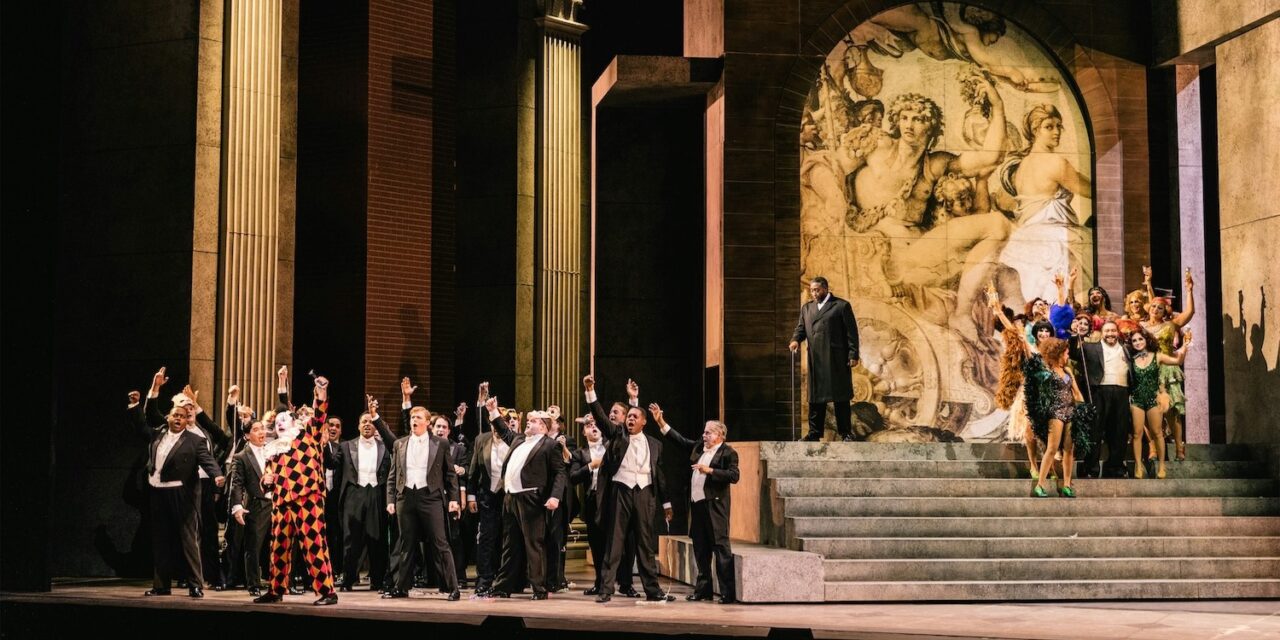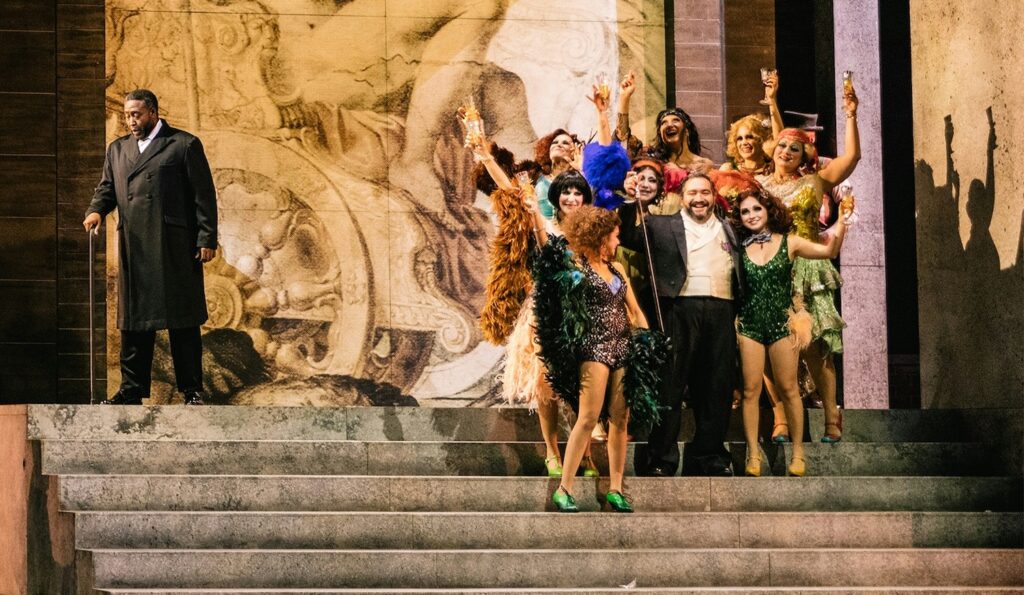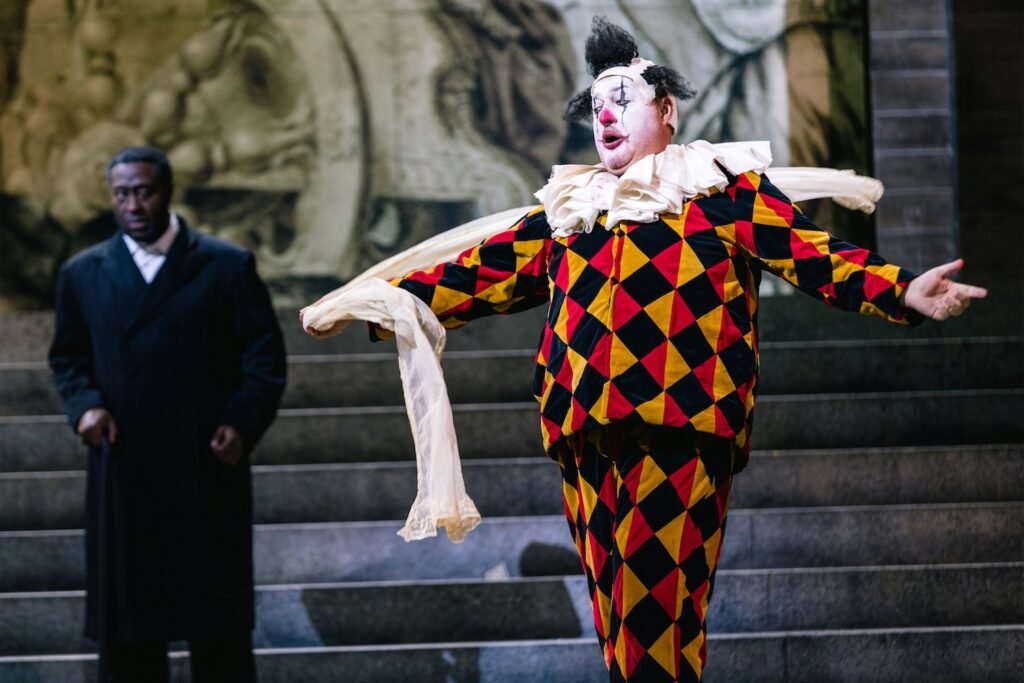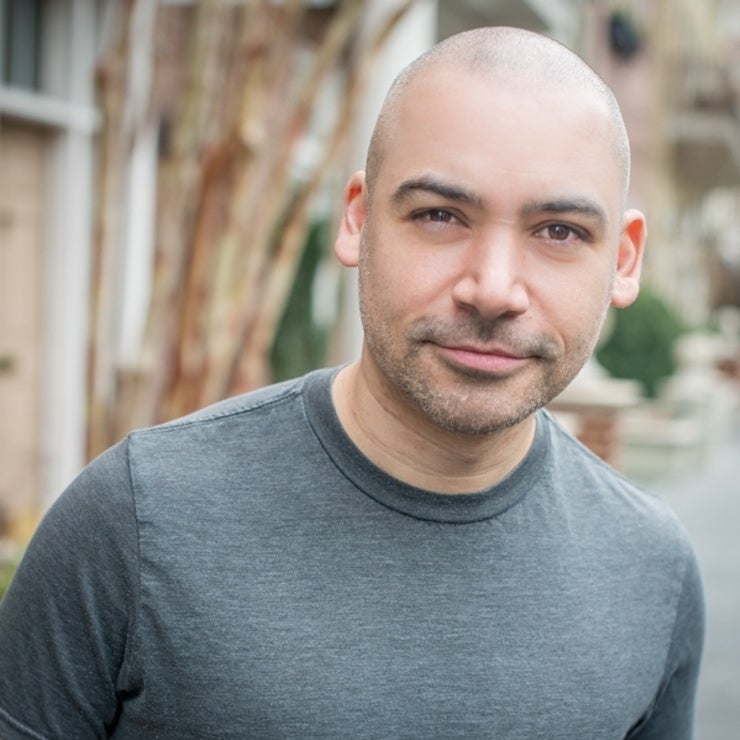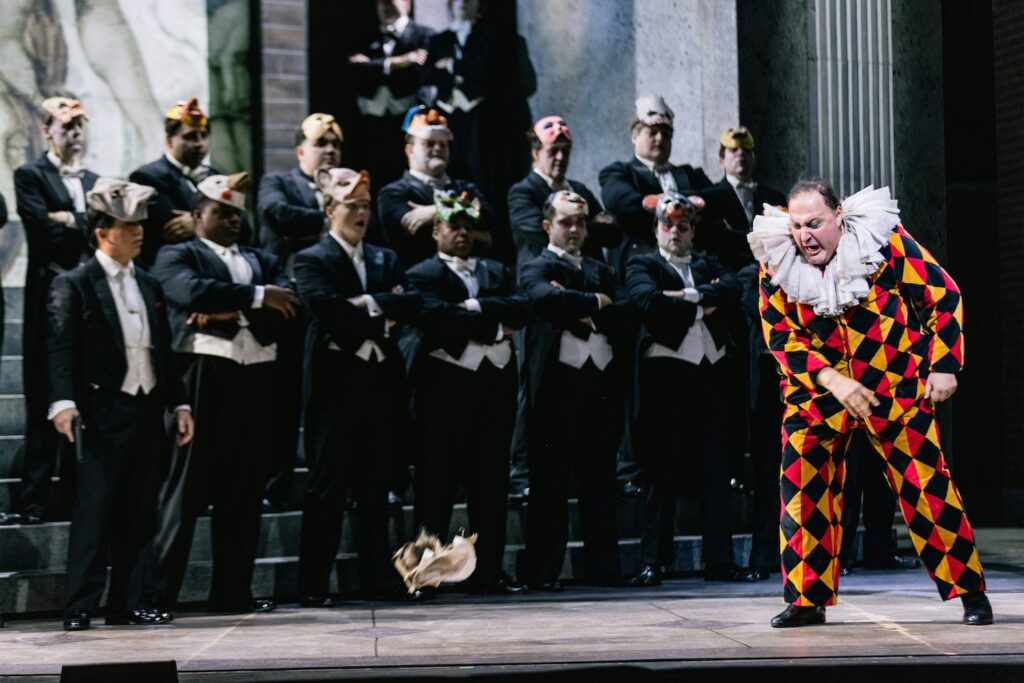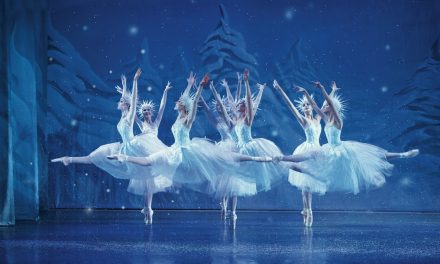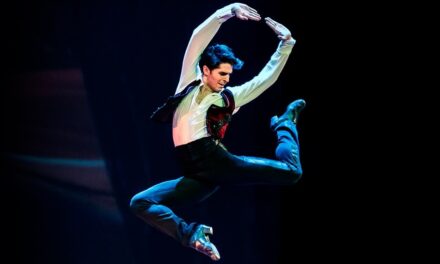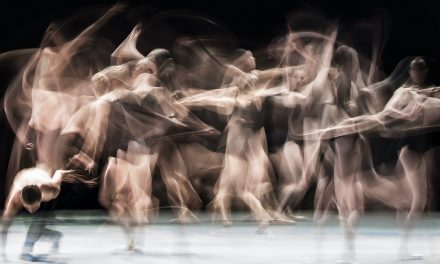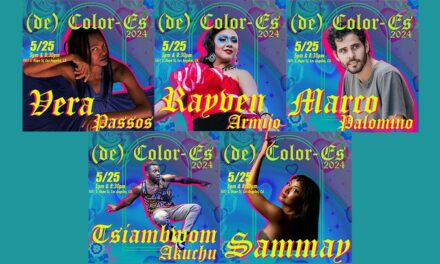When the LA Opera opens Verdi’s Rigoletto next week for six Music Center performances, it will more closely resemble the 2023 Atlanta Opera production than the 2019 and 2022 performances in Houston and Dallas, Texas, all directed by Tomer Zvulun.
The Texas shows drew strong reviews for shifting the opera a century forward from the 1800s.
In 2022, Steven Brown in Texas Classical Review opined “By updating Rigoletto to the 1920s or ’30s, stage director Tomer Zvulun gives a gangsterish twist to Giuseppe Verdi’s tale of men behaving badly. A program note specifies Mussolini’s Italy as the setting, but there isn’t a Fascist blackshirt in sight. A viewer could just as readily see Houston Grand Opera’s production, which opened at the Wortham Theater Center on Friday, as unfolding on this side of the Atlantic.”
After the Texas shows, the director Zvulun tasked Atlanta-based choreographer Ricardo Aponte to lighten the dark tale of lust and privileged cruelty with dancers and clowns. An award-winning choreographer, Aponte has more than 30 musicals, operas, and industrials to his credit as well as directing 15 musicals. And now Rigoletto.
In 2023, Atlanta reviewers continued the praise.
In his review for Arts Atlanta, Paul Hyde described the Atlanta Opera’s production of Verdi’s Rigoletto as dark, decadent and electrifying. “Director Tomer Zvulun offers a modern take on the 1851 opera that provocatively connects the work, usually set in the Italian Renaissance, to our own troubled world, marked by violence and the depredations of the privileged. The sets and costumes may suggest fascist Italy of the 1920s and ’30s, but the overall spirit seems contemporary.”
In the week before the LA Opera opening, Aponte took time from rehearsals to speak with dance writer Ann Haskins about bringing in LA dancers and clowns, the director’s decision to move the opera to contemporary times, the role of intimacy coordinators in an opera fraught with seduction and murder, and how he choreographed banana juggling. (The interview has been edited for length and clarity.)
Haskins: How did you become involved in this Rigoletto?
Aponte: This production was originally performed in Texas. Once they brought it to Atlanta, our director Tomer Zvulun, wanted to add dancers and clowns to the production. In the beginning, the Act One ball scene, the idea was these dancers serve as sort of sex workers. And there is a dichotomy happening. These powerful men are playing with women. The men think that they have the power, yet the women are the ones that know exactly how to play the game to maximize the amount of money that they get. Exploring that idea during the Atlanta run was the objective of adding dancers. Also, during La Donna è Mobile, we’re also adding dancers. As the Duke is bad-mouthing women, his heart is completely broken at that moment, so the women’s job is to make him feel better and activate that storytelling. And in Act Three, the women are trying to convey that it’s going to be okay, because having figured out how to get money, they know that flattery is the best policy.
Haskins: What were your conversations with the director when he said he wanted to bring in more dance?
Aponte: We discussed how it makes sense to bring dancers, people that have a lot of body awareness, to play sex workers in the opera. Dancers know exactly how to move their body and use their faces so one look can articulate a lot. Just the way that the dancers gesticulate with such grace is a great component of our show. Adding dancers brings a whole new level of artistry to our production. The dancers’ flirtiness brings a level of fun and levity, since it’s a pretty dark show. I think that is very important, because its core is about these men, especially at the beginning, about these men and their drinking and sex. But then the dancers bring humor to the piece, bring grace to the piece, and, on the technical level, the dancers are really beautiful to watch.
Haskins: Verdi set the opera in Mantua in the mid-1800’s. How does dance play into setting this Rigoletto in a contemporary era?
Aponte: I would say the production is heavily influenced in the 1930s. The more that we could add dance styles and movements reminiscent of that era, the dance help anchor us in the time period.
Haskins: How many dancers do you have?
Aponte: Six dancers and three clowns.
Haskins: Are the dancers and clowns from LA or Atlanta?
Aponte: The dancers are all LA-based and have previously worked with the LA Opera, so there is a relationship. We viewed videos from past productions and selected our six. There isn’t an official LA Opera dance company, but a lot of the same people that have proved their dependability, their merit. The three clowns are also LA-based, and really fun to work with. They come to play. I know that I don’t have juggling skills, so I rely on them to tell me what’s comfortable, what is sustainable for all the productions. And they’ve been great. And the clowns also move. There’s clownography, for sure. You’ll see how they’re essential in the opening number. The idea is that the three clowns are the new generation while Rigoletto is fading, not as skilled as he used to be. So we have the three new shining clowns with new props. These three are the cool guys, the toast of the town. That is the contrast: Rigoletto as the old guard and then the new clowns, with their juggling and other new tricks. Also, they love bullying poor Rigoletto. Bringing younger clowns to the ball, helps us understand Rigoletto’s status, underscores his sense that he’s outside of the crowd, and now he’s losing ground to new, younger talent.
Haskins: And Rigoletto with his hump is competing with the new clowns?
Aponte: Yes. At the beginning of the show, you’ll see him trying to juggle with one ball, and the other clowns steal his ball, and they do fancier stuff with it. So yes, there’s just sort of like cat and mouse happening. The entire crowd is just using him as an object of jest, a dying object, in a way.
Haskins: So did the clowns tell you, I can juggle it on count one, but I can’t catch it by count three?
Aponte: Exactly. I am not a juggler, but what I could say I really need these beats to be highlighted. Then we sort of figured out a pattern that they could do. In Atlanta, we asked if they could all juggle bananas. Turns out they have to be a very specific banana to juggle as objects. So they told us what’s possible. I do like that. We are working now with clowns from LA and I can have an image in my head and ask, “Is this possible?” And they can tell me yes or no, and then we can grow from there and make it fun. The clowning is very collaborative.
Haskins: Is that also true for the dance choreography?
Aponte: Yes, also with the dancing. I come in with my ideas, and what we’re doing here in LA is pretty much based on what we did in Atlanta, but they’re all new bodies. It’s been two years since the Atlanta performances. Hopefully, I’ve grown in my artistry. Still, it’s important that the dancers have ownership of what they do. I always tell them that if something doesn’t feel comfortable, please let me know or if you feel like we need to do something on a different count or extend the gesture for you to be able to articulate that move, let me know. I don’t want them to feel like they are mannequins. I want them to feel like they have true ownership of every single movement that they’re doing, because ultimately, it needs to feel like they’re coming up with a movement by themselves.
Haskins: I understand this is your first time working at LA Opera? Is it also your first time working in LA?
Aponte: I’ve worked in LA before. I used to be an actor and did a play at LA Theatre Center downtown a few years ago. And yes, this is my first time with LA Opera. It’s been a wonderful experience. It’s a great company.
Haskins: Does your acting background influence your choreography?
Aponte: Oh, very much. I started as a dancer and actor and then transitioned into choreography. Now I’m directing as well as choreographing, but I feel my background in theater has helped me immensely to make sure that the choreography is always clear, always towards storytelling, and never just steps to show off dancers skills. The choreography has to serve a purpose the entire time. The dancers’ moves have to be completely different from other characters, to make sure that each character has a very specific vocabulary, that the audience believes that these are full flesh people with different lives. Perhaps one dancer is ditzier and another is sick of the profession, nuances among the dancers, so it doesn’t feel like a monolith of six people on stage that can do very fancy footwork. They need to feel like they’re real people, and every single movement they do feels organic. My background in theater has helped me understand the importance of that kind of storytelling in the movement.
Haskins: Do you work on movement with the leads and with the chorus also?
Aponte: It sort of depends. Today, we were working with the assassin’s sister Maddalena and the Quartet, blocking that out. We have a wonderful intimacy coordinator also. So between myself, the intimacy director, and the associate director, we work together to make sure that everything flows easily. It also depends on what the specific aria is. But yes, I do work with mostly everyone.
Haskins: The introduction of intimacy directors or coordinators is something fairly recent in the last few years. How does that work into what choreographers do?
Aponte: I think the intimacy coordinator makes the room feel safe. People are able to fully articulate what they’re comfortable with. And if you think about it, everything is intimacy in a way, right? Every musical, every play, every opera, will have intimacy because there will be moments when you’re holding someone’s hand or you’re touching someone’s shoulder. I think it’s just making sure that every dancer, every performer, feels safe. I don’t think we could do a performance today without an intimacy coach. Now, it just feels like it’s so important.
Haskins: My understanding is that the intimacy directors or coordinators are not just involved in the romantic or sensual or sexual context, but they might be called in in things like fight scenes or wherever there is contact.
Aponte: Yes, it also depends on their training. Our intimacy director has a background in fight choreography and also intimacy. We’re very lucky that he knows both fight and intimacy, but sometimes it’s just intimacy.
Haskins: Do a lot of intimacy coordinators have a background in choreography and dance, or they come from other places.
Aponte: It’s funny, I was just talking to Andy, our intimacy coordinator, and no, not a lot have dance or choreography backgrounds. It is a fairly new thing. For example, they only used to hire women to be intimacy directors, but now they open it up to all genders. I feel like more dancers are getting intimacy training because both are a hands-on art form. When you do a lift, you are typically relying on someone else to accomplish something. Just having someone who understands lifting to look out is a good thing.
Also, I feel like dancers now are able to say without hesitation, ‘Hey, I just don’t want to be touched on the shoulders right now,” or whatever their triggers are. And before that, it used to be “Shut up. Do whatever they say. Just move on. Deal with it. Go to therapy.” Now I feel like people are more open. Being an artist is very vulnerable, so why make it harder than it needs to be? And things can change. If the person is not comfortable being touched on the shoulders, there are a hundred more ways to go about it.
Haskins: Is there anything else you would like to talk about the use of dance in this production of Rigoletto and any modifications you may have made since Atlanta?
Aponte: I am adding more choreography to the LA Opera production, so I’m able to elevate the impact. And again, these are new dancers, so my job is, how can I maximize their talent? I think people are going to have a really good time watching the show, seeing the dancers bring this production to life, especially in the opening number.
Haskins: Thank you for your time. Enjoy your rehearsals and enjoy your return to LA.
The dancers in LA Opera’s Rigoletto include Nekai Abriol, Isabella Caso, Katherine Cowgill, Sierra Fujita, Jessica Gadzinski, Courtney Goffney, and Laurie Deziel (swing). The clowns/jugglers are Matthew Deegan, Nicholas Langston, and Alexander Weston.
LA Opera – Rigoletto at the Music Center, Dorothy Chandler Pavilion, 135 N. Grand Ave., downtown; Sat., May 31, 7:30 pm, Sun., June 8 & 15, 2 pm, Thurs., June 12, Wed., June 18, & Sat., June 21, 7:30 pm. $37.50-$450. https://laopera.org/performances/2025/rigoletto
For more information about the LA Opera, please visit their website.
Written by Ann Haskins for LA Dance Chronicle.
Featured image: LA Opera’s “Rigoletto” – Photo by Kyle Flubacker.

